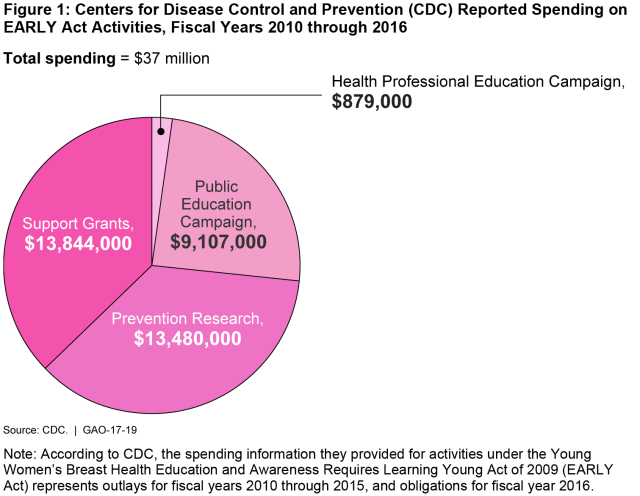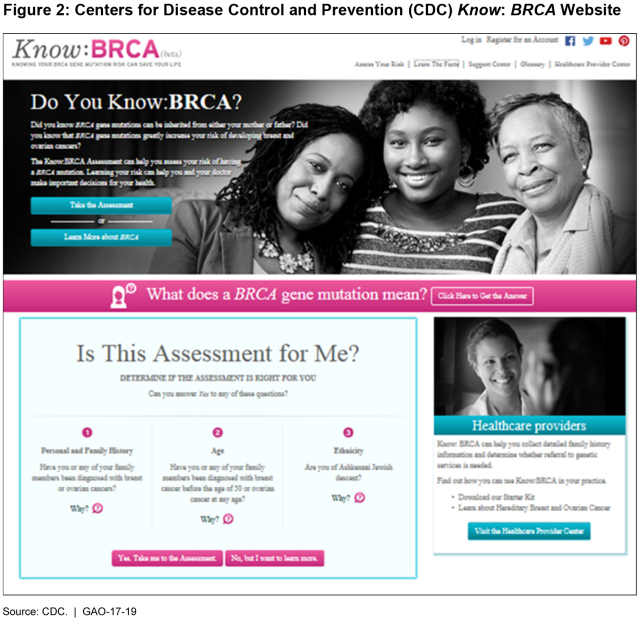Breast Cancer and Young Women
Young women account for 11% of all new cases of breast cancer in the United States. They tend to be diagnosed at a later stage and experience worse outcomes and unique issues—such as fertility concerns.
Listen to Marcia Crosse, a director in our Health Care team discuss the effects of breast cancer on younger women and some of their unique challenges:
And, for Breast Cancer Awareness Month, read on to learn about federal efforts to provide breast cancer education and support to young women.
Initiatives Aimed at Young Women
The Centers for Disease Control and Prevention spent nearly $37 million in recent years on breast cancer prevention research, supporting grants, educating health professionals, and a public education campaign. For example, CDC conducted research in to the economic implications of breast cancer, infertility, and survivorship.
(Excerpted from GAO-17-19)
Given the importance of early detection—and the tendency to think of breast cancer as an older woman’s disease—CDC spent about $9 million on a national campaign to educate young women about breast cancer. Specifically, CDC launched 2 initiatives using social media:
- Bring Your Brave—a web-based campaign that shares online videos with personal testimonials about prevention, risk, and survivorship from young women who have experienced breast cancer, and provides tools and templates for young women to share their stories.
- Know: BRCA—an interactive web resource that enables women to determine their potential risk of having a breast cancer susceptibility gene (BRCA) mutation, and encourages them to discuss this risk with their family and medical providers.
(Excerpted from GAO-17-19)
It’s too soon to know how effective these programs have been, but to learn more about the goals of federal initiatives aimed at providing breast cancer education and support to young women, check out our full report.
- Comments on GAO’s WatchBlog? Contact blog@gao.gov.
GAO Contacts
Related Products

GAO's mission is to provide Congress with fact-based, nonpartisan information that can help improve federal government performance and ensure accountability for the benefit of the American people. GAO launched its WatchBlog in January, 2014, as part of its continuing effort to reach its audiences—Congress and the American people—where they are currently looking for information.
The blog format allows GAO to provide a little more context about its work than it can offer on its other social media platforms. Posts will tie GAO work to current events and the news; show how GAO’s work is affecting agencies or legislation; highlight reports, testimonies, and issue areas where GAO does work; and provide information about GAO itself, among other things.
Please send any feedback on GAO's WatchBlog to blog@gao.gov.






